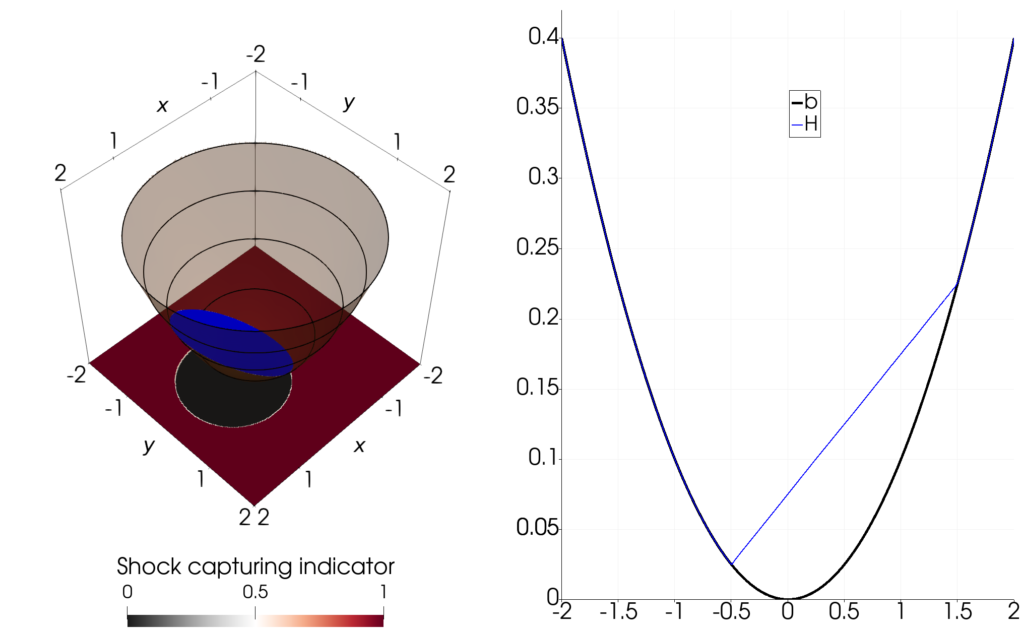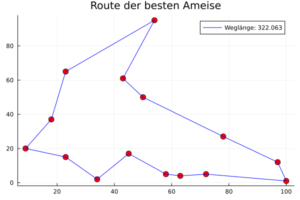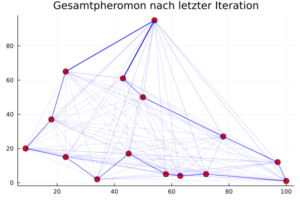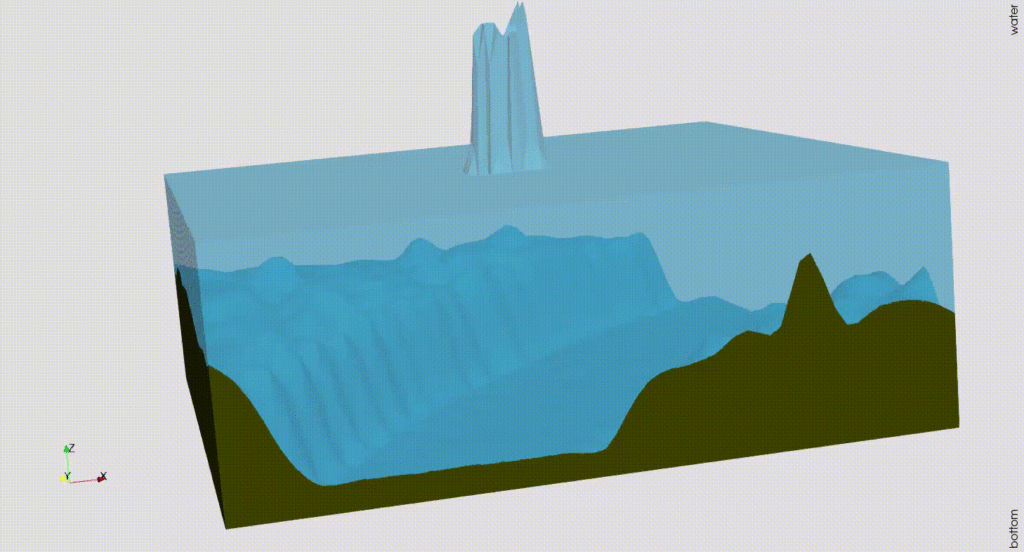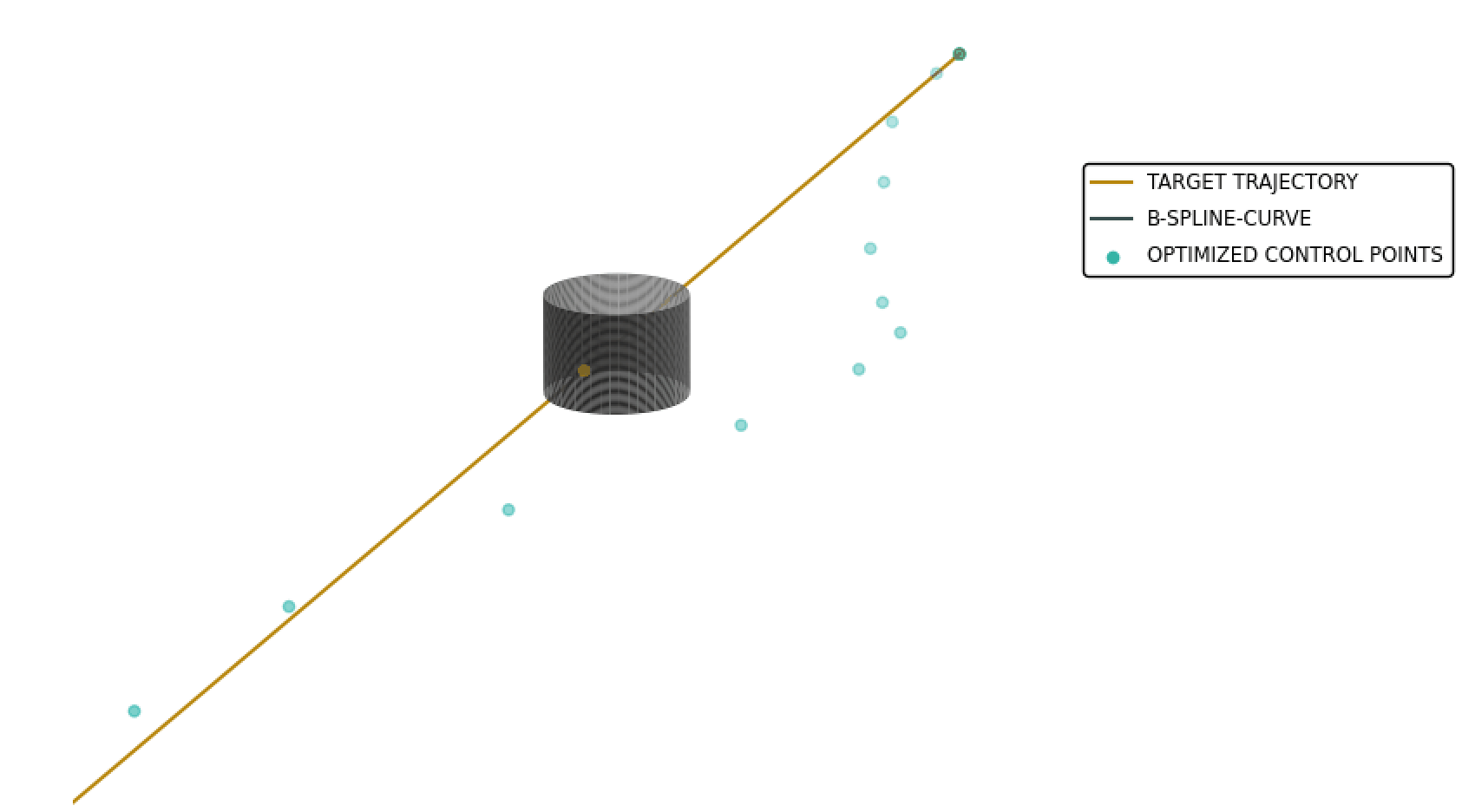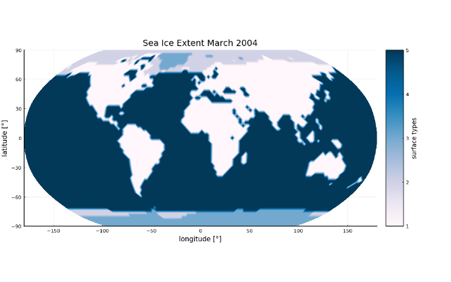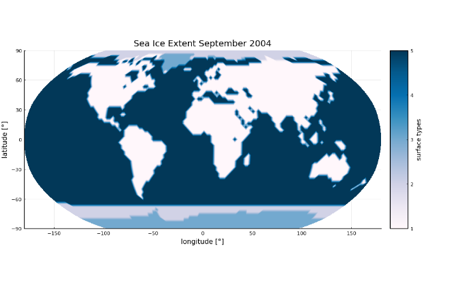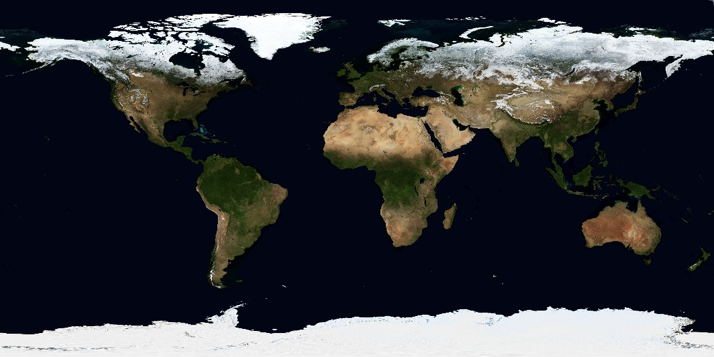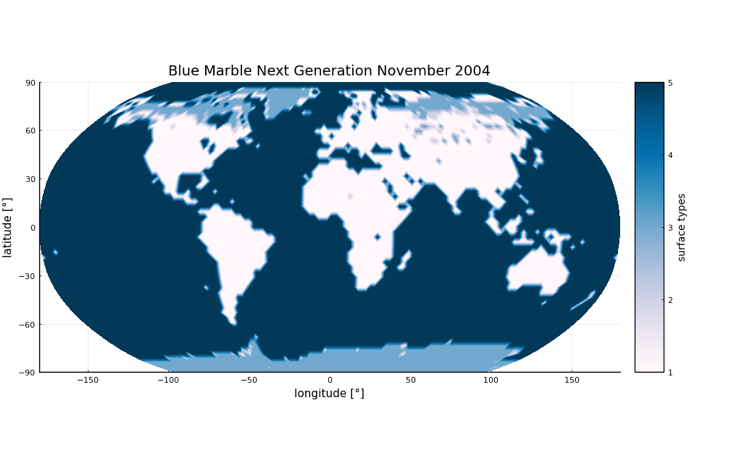The shallow water equations are a well-known and often used physical model to simulate shallow water flow within given domains such as oceans. They are a system of hyperbolic partial differential equations and consist of conservation equations.
The numerical solver Trixi.jl is used to find approximate solutions to the equations. The shallow water equations are already embedded in this framework, but Trixi.jl does not yet allow for the appearance of dry sub-regions. Some strategies are combined and implemented to resolve the wet-dry problem resulting in a stable and well-balanced scheme: We use the positivity-preserving limiter by Zhang and Shu [1], the hydrostatic reconstruction method by Chen and Noelle [2] and a strategy to identify and mark dry cells.
A standard test exists to check for accuracy, namely the parabolic bowl test by Niklas Wintermeyer [3], first presented by William Thacker [4]. We use a StructuredMesh with 75625 elements and polynomial degree five. Since it has periodic analytical solutions, we can show the precision by realizing the initial state and its linear structure are recovered after one period. In the left picture, the whole domain is shown. In the right image, a slice at $y=0$ is visualized. Both are snapshots after one period:
We also use the TrixiBottomTopography.jl package by Maximilian Bertrand to account for real-world bottom topography data from the DGM1 data set. We give the simulation of flooding on the Rhine River valley using a TreeMesh with 1024 elements polynomial degree six and outflow boundary conditions:
References:
[1] Zhang, X. and Chi-Wang, S. (2011). Maximum-principle-satisfying and positivity-preserving high-order schemes for conservation laws: survey and new developments. Proc. R. Soc. A. 467:2752–2776. http://doi.org/10.1098/rspa.2011.0153
[2] Chen, G. and Noelle, S. (2017). A New Hydrostatic Reconstruction Scheme Based on Subcell Reconstructions. SIAM Journal on Numerical Analysis, 55, 758-784. https://doi.org/10.1137/15M1053074
[3] Wintermeyer, N.(2018). A novel entropy stable discontinuous Galerkin spectral element method for the shallow water equations on GPUs. Dissertation, Universität zu Köln. https://kups.ub.uni-koeln.de/9234/
[4] Thacker, W. (1981). Some exact solutions to the nonlinear shallow-water wave equations. Journal of Fluid Mechanics, 107, 499-508. doi:10.1017/S0022112081001882
